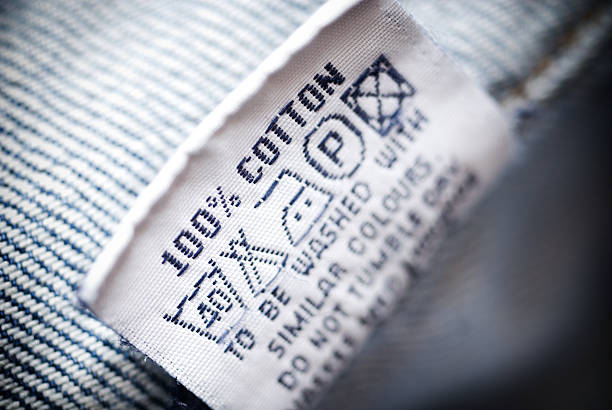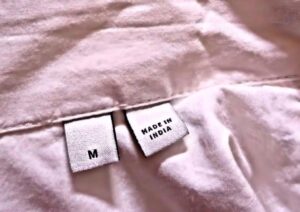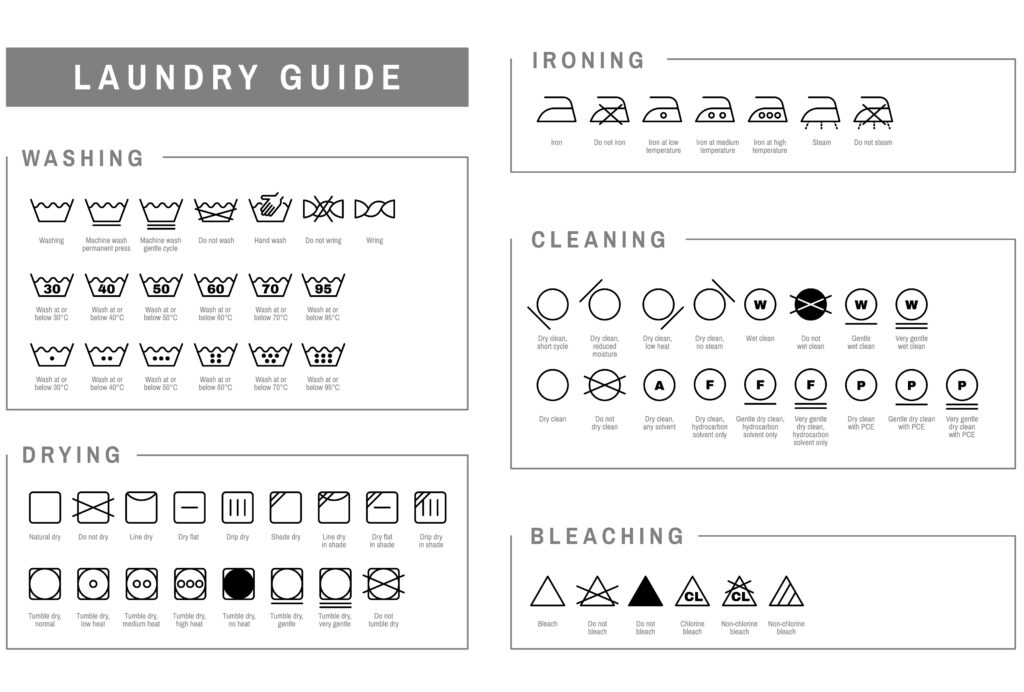You have all been there, standing in front of the washing machine, holding a delicate garment and wondering, “Can I wash this in hot water? Will it shrink? Does this size really fit me?” It’s rare to pay attention to fabric tags if you are new to the textile industry. If you have ever felt confused by the jumble of symbols and text on your clothing labels, this guide on how to read textile labels is here to help.
Understanding these labels is an important step toward maintaining your garments’ quality and ensuring their durability over time.
Why textile tags matter in clothing
Textile tags are also known as care labels, which are the small tags sewn into garments that provide complete information about the product. Typically, you will find these labels in place of the neck, waistband, or side seams of your clothing.
These labels have details such as the fabric composition (the type of fibers used), country of origin, brand name, sizing information, and care instructions for washing, drying, or ironing. In some cases, they indicate certification by environmental or quality standards, such as GOTS or OEKO-TEX.
Types of textile tags you will find
1. Fabric composition

It is important to understand the fabric composition label because a garment is made from many different kinds of fibers, like natural, semi-synthetic, and synthetic. Each type of fiber has its own characteristics that affect the fabric’s appearance, quality, texture, and durability.
For example, natural fibers such as organic cotton, linen, silk, bamboo, and wool are breathable, biodegradable, and generally more skin-friendly. Synthetic fibers like polyester and nylon are wrinkle-resistant and affordable, but they are less breathable, can sometimes feel less comfortable, and produce microplastic pollution when washed.
For more information on different fabric types (natural, semi-synthetic, and synthetic), check out our blog.
In some garments, you will find a blend of 60% cotton and 40% polyester. This means the fabric is a mix of natural and synthetic fibers. Cotton makes the fabric soft and breathable, while polyester helps it resist wrinkles.
While these blends can offer practical benefits, it’s important to note that not all fabrics labeled as sustainable are fully natural. Some sustainable fabrics include synthetic fibers that have been chemically altered or recycled to reduce environmental impact. Knowing the fiber content helps you choose particular garments that suit your needs.
Natural fabrics often require a bit more gentle care than semisynthetic or synthetic fabrics. Washing at lower temperatures (depending on the fabric type) and using mild detergents or natural soaps to maintain their quality and extend their lifespan. However, this extra attention helps preserve their softness, breathability, and durability.
2. Country of origin

The country of origin on a clothing material tag tells you where the fabric was produced. This is important because it can give you information about the quality, craftsmanship, and ethical standards behind the fabric.
As an example, India is a leading producer of cotton and handloom fabrics. It also has a long history of weaving and high-quality natural fabrics. It is also important for consumers who prioritize ethical production and sustainability.
3. Size information

When you look at the clothes size tags, it often gives you a general idea of how that garment will fit. Size cannot be standardized across brands or countries. Most brands have their own sizes.
For instance, a “medium” for one brand may fit slightly tighter or looser than a “medium” for another brand.
Numbers like 4, 6, 8, 10, 12, etc. are used by certain brands. These numbers generally match certain body measurements, but the brands differ in using them. Thus, a “size 6” in one brand could actually be more like a “size 8” in another brand.
Sizing systems can also vary from country to country. For example, US size 8 is Indian size 40. While shopping online internationally, it is important to refer to the brand’s size chart or a conversion chart to ensure the correct fit.
Important note: Always refer to the brand’s size chart, particularly when making a purchase online. Cross-check your body measurements (bust, waist, hips) with those on the chart. This is usually more accurate than just selecting an item based on the label size.
4. Care instructions

Fabric symbols are the most common method to use while washing, drying, or ironing. The symbols provide simple and clear instructions that help you treat your garments in an appropriate way to last longer. Ignoring these instructions leads to damage, including stretching or shrinking, that shortens the life of your garments. Adhering to the proper guidelines avoids damage in the form of shrinking, fading, or wear.
Conclusion
Learning how to read textile labels is a small step that makes a big difference. Taking a moment to understand fiber composition and care symbols can go a long way, helping your garment last longer, maintain its appearance, and reduce unnecessary waste. If you had known the labels beforehand, it would have helped you to identify and follow instructions easily in the future.
Choosing natural fabrics can make a big difference in the environment. The fabrics are soft, durable, safe for your skin, and also better for the environment. At Green Tailor, we are dedicated to offering ready-to-dye high-quality natural fabrics and products worldwide with no MOQ. All organic cotton fabrics are GOTS certified, and linen fabrics are OEKO-TEX certified. We believe that sustainable choices should be accessible to everyone by making it easier to create a healthier future.
